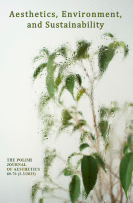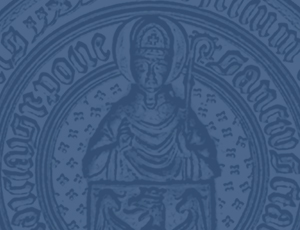 Widok zawartości stron
Widok zawartości stron
 Widok zawartości stron
Widok zawartości stron
 Widok zawartości stron
Widok zawartości stron
 Widok zawartości stron
Widok zawartości stron
CFP: “Melancholia”, 66 (3/2022)
Submission deadline: June 30, 2022; Editors: Anna Wysowska (Jagiellonian University in Kraków, Poland), Krzysztof Zanussi (director, screenwriter and professor of cinematic arts)
Melancholy is a phenomenon that escapes definition, making melancholy challenging to assign to a specific field of research. The phenomenon can be analyzed in medical, philosophical, and anthropological terms and is thematically explored by some artists in their creative work.
Since the Middle Ages, melancholy has been identified with acedia, an illness of the soul rather than the body. The ancients would use this term to describe a physical human disposition associated with an excess of black bile in the body. Psychoanalysis linked melancholy to bereavement, in which a case of the condition had its direct cause, as long as the object of loss could be identified.
Modern psychology introduced the notion of depression, a mental disorder that poses a severe threat to the afflicted and requires treatment instead of reflection. In this approach, melancholia qua disease moves away from melancholy as an aesthetic category. While present in existential thought, the impassable separateness of the subject from everything that is not themselves, angoisse or Weltschmerz, realities difficult or even impossible to grasp conceptually, find their expression in art, or myth—which allows us to look for the links between a state of existential emptiness and melancholy.
Melancholy is a sense of loss, longing, inaction, apprehension, and a kind of love of suffering. Along with the sense of strangeness that stems from the present, the mechanism for remembering loss can manifest as the feeling of longing after a lived, subjective experience and after feeling a desire for a nonexistent and unexperienced past.
To what extent can melancholy represent an artistic mannerism, a specific stimuli for creative possibilities, and to what extent does it represent a threat to the individual human being and the development of culture? Does melancholy or its equivalent occur in the traditions of other cultures? What is it, how does it arise? Melancholy qua a personal experience, a cultural phenomenon, a symbol, a threat to civilization, or an individual illness; this is just a handful of possible explanations. Leaving the author free to choose how to reflect on the subject, we invite researchers to take it up again in this upcoming volume of The Polish Journal of Aesthetics.
Submission deadline: June 30, 2022.
We would like to kindly ask all authors to familiarize themselves with our guidelines, available under “For Authors”. and to double-check the completeness of each article (including an abstract, keywords, a bibliography, and a note on the author) before submission. Only completed papers should be submitted using the submissions page, which can be found here.


